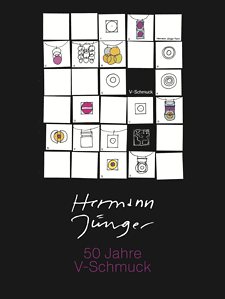No other material has undergone such a transformation in recent centuries in the visual and applied arts as plastic. As early as the 15th to the 18th century, attempts were made to produce materials artificially, that would imitate and even surpass natural artistic materials in their perfection. Social developments in the 19th century rapidly promoted research in the field of plastics production. With the development of celluloid, bakelite, and galalith, a substance that could be shaped under heat and produced in different colors, plastics came into circulation. From the beginning, plastics played an important role in the manufacture of jewelry, initially as imitations of ivory, amber, jade and other precious materials. After the Second World War, the triumphal procession of fashion jewelry, the so-called Bijoux Couture, began. Coco Chanel and Elsa Schiaparelli, who designed jewelry made of false pearls, crystals, or plastic, set the tone. The artistic significance of plastic developed enormously in the 1960s. The Munich-based artist Hermann Jünger had already achieved great recognition for his gold and silversmith works in the field of jewelry and utensils, which are still of great importance today. However, even he could not escape the fascination of plastic.
Hermann Jünger: 50 Jahre V-Schmuck
Welcome! AJF believes that essays, dissertations, and other writing about art jewelry deserve to be readily accessible, researched, and savored. Enjoy.

Title: Hermann Jünger: 50 Jahre V-Schmuck
Author(s): Quittenbaum Gallery, with foreword by Nadine
Topic: Hermann Jünger
Publication Year: 2020
Institution: Quittenbaum
Discipline: Contemporary Jewelry
Relevant Country(s): Germany
Material: plastic